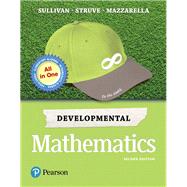ALERT: Before you purchase, check with your instructor or review your course syllabus to ensure that you select the correct ISBN. Several versions of Pearson's MyLab & Mastering products exist for each title, including customized versions for individual schools, and registrations are not transferable. In addition, you may need a CourseID, provided by your instructor, to register for and use Pearson's MyLab & Mastering products.
NOTE: Make sure to use the dashes shown on the Access Card Code when entering the code.
Student can use the URL and phone number below to help answer their questions:
https://support.pearson.com/getsupport/s/
800-677-6337
Packages
Access codes for Pearson's MyLab & Mastering products may not be included when purchasing or renting from companies other than Pearson; check with the seller before completing your purchase.
Used or rental books
If you rent or purchase a used book with an access code, the access code may have been redeemed previously and you may have to purchase a new access code.
Access codes
Access codes that are purchased from sellers other than Pearson carry a higher risk of being either the wrong ISBN or a previously redeemed code. Check with the seller prior to purchase.
Video Notebook for Sullivan/Struve/Mazzella, Developmental Mathematics plus MyLab Math - Access Card Package, 2/e
0134679334 / 9780134679334 Video Notebook for Developmental Mathematics plus MyLab Math - Access Card Package, 2/e
Package consists of:
- 0134719603 / 9780134719603 Video Notebook for Developmental Mathematics
- 032119991X / 9780321199911 MyLab Math - Standalone Access Card








